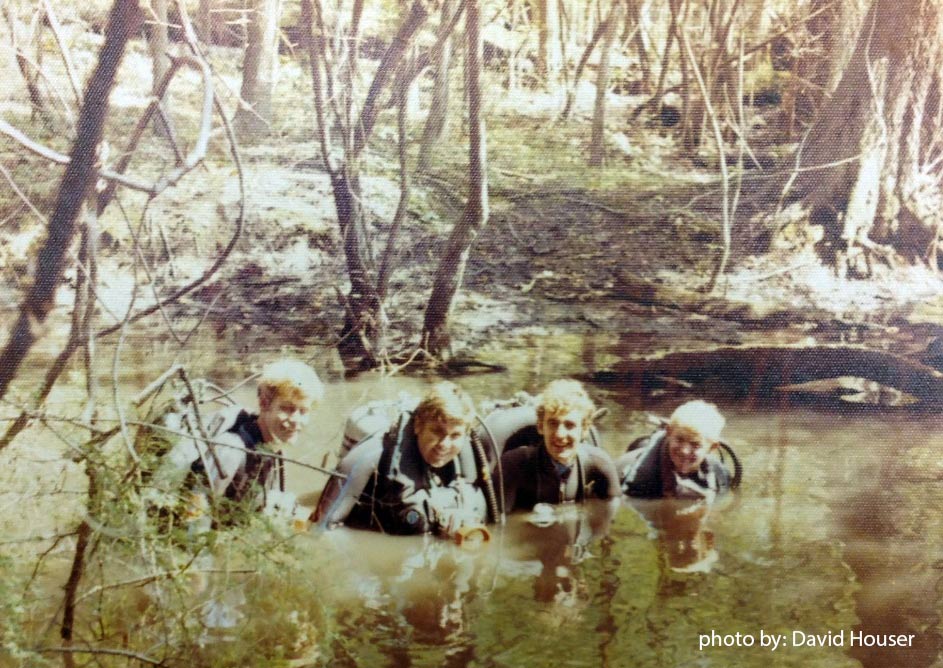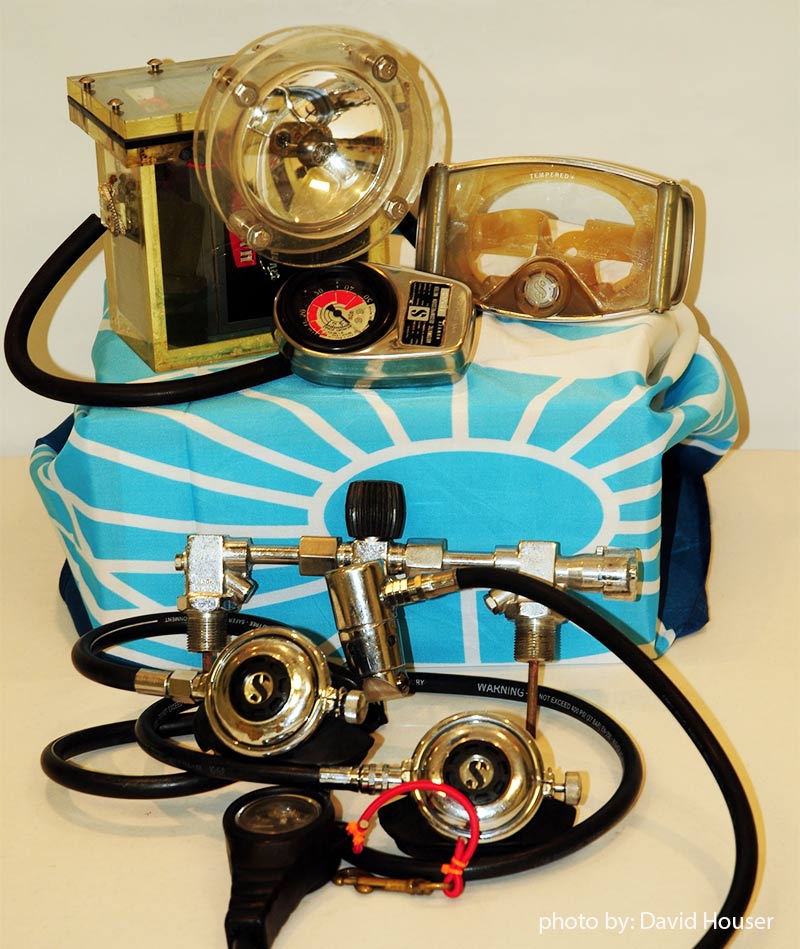Were You a Fan of Sea Hunt?
by David Houser:

My Navy VOIT double hose regulator.
Sea Hunt, a TV series originating in the late 50’s and running until the early 60’s, captivated the audience and may have motivated many young viewers to become future divers. I always wanted to go on underwater crime – fighting scuba adventures like former U.S. Navy Frogman, Mike Nelson. Fully equipped, he always wore a VOIT green label double hose regulator.
In the early 1970’s, as an airman stationed in Austin, TX, talk would sometimes lead to scuba diving. Sears carried scuba equipment, including Navy VOIT double hose regulators (right hose for inhalation and left for exhalation), VOIT 72 cubic ft tanks, masks and fins. It didn’t take long to make a decision that would affect a lifetime. With new equipment and full tanks, our destination was Austin’s own Lake Travis. I was hooked on the first dive.
Transferring to Florida in 1972, and ready to dive, the first hurdle was learning tanks could not be filled without a certification card. Hal Watts’ store offered classes. The certification was NASDS and…WOW… did I learn a lot! My instructor quickly became a good friend and I continued diving, getting my advanced certification and experiencing Florida’s springs.

Early 1970’s, preparing to dive into Cisteen.
Nearly every Friday evening we would go diving. Because most of the springs (Peacock, Orange Grove, Troy, Ginnie, Blue Springs, Ichetucknee, Little River and 40 Fathom Grotto, to name a few) were privately owned, we had to hike through cow pastures and woods to reach our destination.
While diving these springs I became fascinated with the underwater cave systems, and subsequently bought single hose regulators with an alternate air source (octopus), double 72 cubic ft tanks with manifold, Atpack (to replace the horse collar buoyancy compensator), and a new SCUBAPRO dive computer. The regulator was put on the manifold in the center of the tanks. The octopus, an idea Hal Watts came up with, was put on a swivel so if a buddy needed air, he could use it.
Switching from a double hose regulator to the single hose reduced the work of breathing, which was not affected by the diver’s position in the water. Another notable improvement included, bubbles being released from under the chin instead of behind the head.

We trained with several instructors in Peacock Springs, doing appropriate skills and practicing silt out drills. The phrase “plan your dive and dive your plan” was used by Hal Watts, and holds true even today. We planned and executed dives in Peacock 1, 2 and 3, Orange Grove, Olsen, Challenge, Cisteen sinks (all part of the Peacock Springs system); as well as Little River and Ginnie Springs. During some of the dives we would post signs warning divers that cave diving is dangerous without proper training, and attempted to connect tunnels different tunnels.
It was a pleasure to dive and spend time with some of the true pioneers of cave diving, especially Henry Nicholson. As a member of the Jacksonville Sheriff’s Office Dive team, I hold the highest respect and admiration for Capt. Henry Nicholson. *
The training was great back then, but it’s been amazing to watch how instruction and equipment has, and continues to, improve over the years.
My training and education continues today as an Instructor Trainer with SDI/TDI/ERDI and PADI Master Instructor.
Please remember, get the training you need for the type of diving you want to do.
* Henry Nicholson was Captain of the Jacksonville Sheriff’s Dept. Dive Team. He founded IUCRR (International Underwater Cave Rescue and Recovery) along with Robert Laird, in 1999. The Nicholson Tunnel in Peacock was named after him, as was the Henry


Leave a Reply
Want to join the discussion?Feel free to contribute!